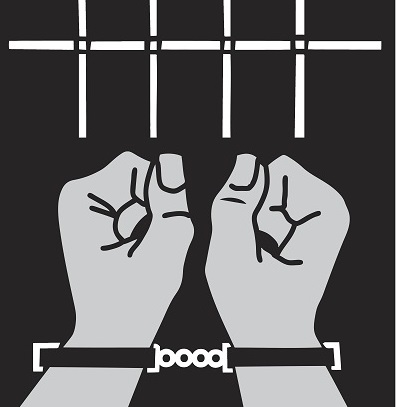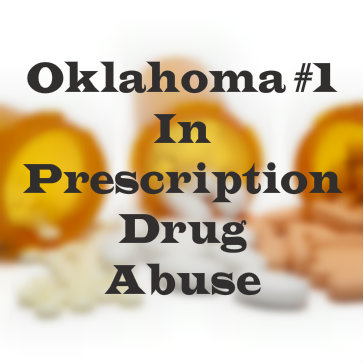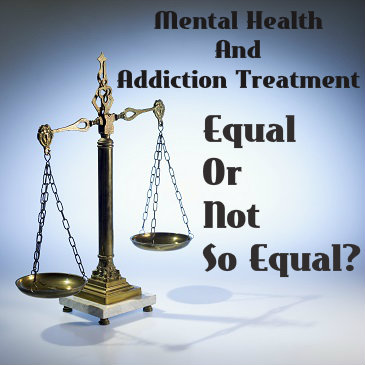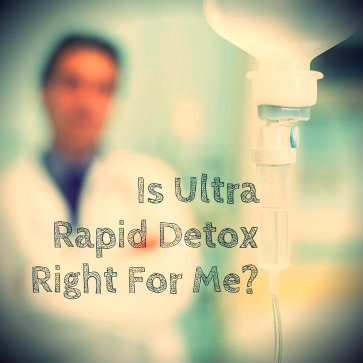10 Oct 2014
Jail Is Not A Form Of Rehab
For decades, the war on drugs in the U.S. has taken a hardline strategy. Addicts are treated like criminals rather than people with a serious illness. As attitudes begin to shift and research tells us more about the disease of addiction, many hope that drug policies will also change. The tough love idea that prison can cure an addict is no longer working in the rehab vs. jail debate.
Punishment As Rehabilitation
 A dominant philosophy of treatment for drug addiction has been one of punishment. Society has long viewed addicts as people with moral failings and natural weaknesses. The idea has been that in order to correct their poor choices, tough love and punishment are needed.
A dominant philosophy of treatment for drug addiction has been one of punishment. Society has long viewed addicts as people with moral failings and natural weaknesses. The idea has been that in order to correct their poor choices, tough love and punishment are needed.
Although the general attitude toward addiction as a disease to be treated with medical techniques has been growing, many addicts end up in prison. For too many addicts, a stint in prison, or more than one, is the only type of rehab they receive.
Prison exists for several reasons. The main point of incarceration is to punish. It also exists to remove offenders from society. Finally, prison is supposed to rehabilitate inmates, even those that are not addicts. The time spent in jail is to be productive and to prepare inmates for re-entry into society as contributing members. Unfortunately, jails and prisons have largely failed at this last goal. How can they be expected to be facilities that will successfully treat drug addicts?
True Drug Rehabilitation
Drug rehabilitation statistics tell us that the punishment model simply doesn’t work, and neither does using jail as a form of drug rehab. Real rehab means using a combination of evidence-based techniques that are individualized for each patient. Trained professionals should lead the techniques. Therapy, counseling, group support and medications where appropriate are the tools of drug and alcohol addiction rehab. Evidence from modern research tells us that these are the methods that work, not punishment.
True drug rehab can take many different forms. The important thing is that it should conform to the needs of an individual. Rehab can mean spending weeks to months working intensively in a residential facility. It can also mean working in therapy groups while still living at home, or simply attending 12-Step support groups and using self-help techniques to stay sober.
The most important factors, as demonstrated by drug rehab success rates, are that rehab methods are based on evidence and that the overall program is individualized. When an addict receives this type of treatment from caring professionals, he stands a real chance of getting well again. Jail is no place for an addict. It simply doesn’t work as rehab and it only increases the odds of an addict getting in trouble with the law again.
01 Sep 2014
What Kind Of Addiction Therapy Do You Need?
Addiction is a complex disease that starts in the brain and affects the entire body. It includes components of mental and physical health and requires an individualized treatment plan that addresses all the patient’s needs. A complete program of treatment for addiction should include some type of therapy or counseling, but with so many options available, it can be confusing. Learn about therapy and what it means for addiction to be sure you are getting the kind of treatment you need in order to heal.
Addiction Therapy Types
Individualized Treatment For Addiction
The first and most important thing to realize when getting treatment for your addiction is that the most effective plans are individualized. Addiction is both complex and personal. Everyone is different and responds differently to treatment approaches. Make sure that the therapist, counselor or rehab facility you work with will take this into account and has a philosophy of individualizing care.
Outpatient vs. Residential Therapy
 Receiving therapy on an outpatient basis means that you can stay at home and visit your treatment center at convenient times. This option works well for people who need to continue going to work and who have a strong support network at home. If your addiction is severe and you have no one to support you in your sobriety, you might want to consider getting therapy in a residential setting. This means staying overnight for a period of a week or up to several months in a facility dedicated to addiction treatment. Both types of care will allow you to get the therapy you need, but one may be better suited to your needs than the other.
Receiving therapy on an outpatient basis means that you can stay at home and visit your treatment center at convenient times. This option works well for people who need to continue going to work and who have a strong support network at home. If your addiction is severe and you have no one to support you in your sobriety, you might want to consider getting therapy in a residential setting. This means staying overnight for a period of a week or up to several months in a facility dedicated to addiction treatment. Both types of care will allow you to get the therapy you need, but one may be better suited to your needs than the other.
Cognitive-Behavioral Therapy
The type of therapy that you are most likely to encounter while being treated for addiction is called cognitive-behavioral therapy, or CBT. A therapist practicing CBT will help you to learn what prompts your drug use or drinking. CBT helps you to recognize these motivations and teaches you how to change your substance abuse behaviors. CBT is sometimes also combined with a type of therapy called mindfulness. This means learning how to be more aware of your mood, your physical symptoms and external factors so that you can recognize triggers and avoid relapsing and using drugs or alcohol after a period of sobriety.
Group Therapy And Support
Another important component of treatment for addiction is social therapy. When you can work with other addicts, people who understand what you are going through, your treatment becomes more powerful. Group therapy sessions are common in residential rehab facilities, but you can find groups to attend on an outpatient basis. The experience of sharing your struggles in a safe environment, and learning from others, is powerful and can advance your healing. The support of these other people can lead to lifelong relationships that help you to stay sober.
Family Therapy
Addiction often starts at home; working with your family as you go through therapy can be helpful. If members of your family are willing, a therapist will work with you as a group and consider the family as a system with its own special dynamics. Being able to open up with your family and getting to the root of some of your issues is not always comfortable, but it can go a long way toward helping you get and stay sober.
Therapy is an essential component of addiction treatment and one that you should consider carefully. If you have no idea where to start, let your physician refer you to a good therapist. From there you can plan your course of treatment, decide whether you need a residential facility and begin to work toward your goal of recovery.
Ready To Begin Addiction Therapy? Call Us Now To Learn More
The struggle of a spouse coping with an addicted partner is one that is often discussed, written about and addressed as an important element of addiction treatment. What we don’t hear about as often are the cases in which both partners in a marriage are battling addiction. For a spouse who has never had an addiction, watching her loved one struggle and trying to lend support and love is an extreme challenge. If both people are addicted, it magnifies the problem. How do you support each other when you are each battling your own addiction demons and trying to stay clean?
Should I Get Addiction Treatment With My Spouse?
 The most important decision you both need to make is to each get help. How you do that and what resources you use to get help are less important than taking that first step. Once you have both agreed that you need the care of addiction professionals, you are ready to face the rest of your journey. The next question to be answered is whether you go it alone or try to go through rehab together.
The most important decision you both need to make is to each get help. How you do that and what resources you use to get help are less important than taking that first step. Once you have both agreed that you need the care of addiction professionals, you are ready to face the rest of your journey. The next question to be answered is whether you go it alone or try to go through rehab together.
The good news is that you have options. Addiction treatment has advanced tremendously over the last couple of decades. There are many more ways in which you can get care, and if you want to, you can do it together. One benefit of working together is that you both stand a better chance of being on the same page if you receive the same program of treatment from the same professionals. Different treatment programs adhere to different philosophies and when you both work with the same one, you will understand each other better. Working together will also give you the opportunity to address your relationship issues as well as your addictions.
One philosophy of addiction treatment says that you should be solely focused on yourself. If you work together on your treatment, you may fall into bad relationship habits and fail to devote yourself entirely to your own healing process. Discuss your options together and consider asking the opinions of addiction professionals as well. You can always change your plan if working together or apart does not go as you hoped it would.
What If My Spouse Won’t Commit To Treatment?
As long as you both are committed to getting treatment for your individual problems, your relationship stands a chance of surviving your addictions. What happens if one of you refuses treatment or won’t follow through with it? This situation can be incredibly difficult for both partners. If you are moving forward and your spouse is falling behind, you have a major problem. Staying together means that your spouse could drag you back into addiction. If you separate, it could mean that your spouse falls into an even deeper hole.
The ultimate decision as to how to handle a spouse who won’t join you on your journey to sobriety is personal. Only you can decide what is right for you and your relationship, but know that you likely won’t last long if one of you is abusing drugs or alcohol while the other is in recovery. It’s a volatile situation that is bound to blow up. If your spouse refuses to get help, do everything in your power to encourage him or her do so so. If you can’t, it may be time to move on. It will feel like a terrible abandonment, but you can only change yourself. Your transformation into a healthy and sober person may even be the push needed to get your spouse to follow suit.
You And Your Spouse Are Worth It – Give Us A Call Now To Begin The Healing!
Twelve-step programs are mutual self-help programs that use a combination of gradual goals (i.e., steps) and peer support to help recovering substance addicts establish and maintain a long-term commitment to avoiding further substance use. However, not all people who join these programs attend regularly or successfully abstain from substance intake. In a study published in May 2014 in the journal Addiction, researchers from the U.S. and Norway assessed the effectiveness of a technique called motivational intervention in helping 12-step participants increase their program involvement and their ability avoid substance relapses.
12-Step Approach
 The 12-step approach was initiated in the 1930s with the formation of Alcoholics Anonymous. Participants in 12-step-based programs commit to a progressive series of actions designed to help them recover from active involvement in the use of alcohol or other substances of abuse. These actions including admitting a lack of self-control over addictive behaviors, making a call to a higher or greater power to assist in the recovery process, examining and atoning for damaging conduct while under the influence of drugs or alcohol, and eventually providing assistance to others not as far along the path of recovery. As a rule, 12-step programs rely heavily on peer sponsorship provided by longer-term members. The 12-step approach is widely used and has proven effective as an aid to the substance recovery efforts carried out in treatment centers that deal with problems such as alcohol addiction, cocaine addiction and opioid narcotic addiction.
The 12-step approach was initiated in the 1930s with the formation of Alcoholics Anonymous. Participants in 12-step-based programs commit to a progressive series of actions designed to help them recover from active involvement in the use of alcohol or other substances of abuse. These actions including admitting a lack of self-control over addictive behaviors, making a call to a higher or greater power to assist in the recovery process, examining and atoning for damaging conduct while under the influence of drugs or alcohol, and eventually providing assistance to others not as far along the path of recovery. As a rule, 12-step programs rely heavily on peer sponsorship provided by longer-term members. The 12-step approach is widely used and has proven effective as an aid to the substance recovery efforts carried out in treatment centers that deal with problems such as alcohol addiction, cocaine addiction and opioid narcotic addiction.
Motivational Interventions
Many people who enter substance recovery programs do so with mixed feelings about the recovery process. In fact, significant numbers of program participants enter treatment only at the urging of others. People with ambivalent or hostile feelings toward substance recovery commonly fail to participate fully in their programs, meet the specific objectives that programs set for their clients/patients or successfully complete their program involvement. Motivational interventions are designed to help program participants uncover the mixed or negative feelings they may have about substance recovery, and also to help them change their minds and become more willing and proactive in their treatment. As a rule, practitioners of motivational interventions work cooperatively with clients/patients in an interactive process that strives to avoid a confrontational or antagonistic atmosphere. While a motivational intervention can help at almost any stage of treatment, it typically has its biggest impact in the initial stages of recovery.
Usefulness In 12-Step Programs
In the study published in Addiction, researchers from Stanford University, the Department of Veterans Affairs and Norway’s University of Oslo and Sorlandet Hospital used an examination of 140 Norwegians receiving treatment for alcoholism to assess the usefulness of motivational interventions in promoting involvement in 12-step programs. All of these study participants were in inpatient facilities for alcohol detoxification. Half of the participants received a motivational intervention called 12-step facilitation in two 30-minute sessions. This form of intervention is designed to increase clients’/patients’ level of comfort with 12-step involvement. The facilitation sessions provided during the study included detailed explanations of how substance addicts lose control over their behaviors, a DVD on the 12-step process created by Alcoholics Anonymous and immediately available resources for making direct contact with 12-step groups. The other half of the study participants received only basic advice on 12-step resources in a brief informational session.
Six months after the study participants concluded their involvement in inpatient detoxification, the researchers compared the level of 12-step involvement among the people who received motivational interventions to the level of involvement among the people who only received brief advice on 12-step resources. They concluded that the participants who received motivational interventions were significantly more likely to attend 12-step meetings than those who received only brief advice. They also concluded that the motivational intervention group used both alcohol and drugs on fewer total days than the brief advice group.
Despite the increased 12-step involvement and fewer days of substance use, the authors of the study published in Addiction concluded that the recovering alcoholics who received motivational interventions did not remain abstinent from substance use any more often than their counterparts who received brief advice on available 12-step resources. In addition, motivational intervention did not lead to a decrease in the severity of alcohol-related symptoms. Still, the authors note that, since motivational intervention recipients do attend 12-step meetings more often and use drugs and alcohol on fewer days, the technique may prove useful as part of the recovery process for alcoholics who go through alcohol detoxification.
At one time Oklahoma ranked number one in prescription drug abuse. After implementation of a statewide prescription drug monitoring program (PDMP) and the concerted efforts of lawmakers and law enforcement the state has moved down the list to number eight in the nation. But Oklahoma is not satisfied and continues to try and overcome the scourge of prescription drug abuse.
How Big Is The Prescription Drug Problem?
Last year in Oklahoma doctors and medical professionals wrote 10 million prescriptions for powerful opioid painkillers and other scheduled drugs. Those prescriptions were written to 142,369 patients, which averages out to 68 prescriptions per patient. Pharmacists filled those prescriptions with 597 million pills.
The detailed information is available thanks to the state’s PDMP, which electronically records the data. The hope is that doctors would look online before writing a prescription to see how often each patient has been given a script for heavy-duty medication. But reviewing the data it became evident that few doctors, just one-fourth, were using the PDMP prior to writing prescriptions for patients. Doctors are not yet legally required to check the PDMP first, but that could change.
Death Toll Rising
In 2012 there were 844 fatal overdoses in Oklahoma. That means that year more people died from drugs than were killed in car crashes, at 708. The majority of drug overdoses were accidental, and 75 percent involved prescription drugs.
The most dangerous prescription drugs in terms of overdose risk are opioids (e.g.: Vicodin, Lortab, OxyContin, Percocet), and the anti-anxiety medication Xanax. Too often people mix medications with alcohol, or take multiple meds at the same time. The stats show that two people per day are dying in Oklahoma because of prescription drug overdose. Deaths related to prescription drugs have risen 80 percent there in the past 10 years, and Oxycodone and Hydrocodone deaths in the state have quadrupled in that time.
The problem is most acute among 18- to 25-year-olds with a 10.9 percent abuse rate. Overall, 5.2 percent of Oklahomans over age 11 abuse the medications. Apart from the risk of fatal overdose, another concern about the epidemic of opioid abuse is where it tends to take people. Experts in the state say that around 85 percent of heroin users started out abusing prescription opioids.
Oklahoma is not unique. Across the country abuse of prescription drugs continues to claim a shockingly high number of lives. And where opioid use is beginning to drop, there is the selfsame increase in heroin use. Which makes it that much more important that we stop the problem before it moves to the street. We can monitor and prevent much prescription drug abuse through PDMPs. If we don’t, the problem will quickly transition to street drugs like heroin where monitoring and intervention is far less likely.
12 May 2014
Is Addiction Coverage Really Equal?
In recent years, two federal laws have guaranteed fair and equal coverage for mental health and addiction treatment. Those working in the field of addiction care are not so sure that the intent of those laws is really playing out in reality. People struggling with substance use disorders may not be getting the insurance coverage they need in order to get well.
The Federal Laws
In 2008, President Bush signed the Mental Health Parity and Addiction Equity Act. The law is supposed to ensure that health insurance plans are no more restrictive when it comes to mental health or addiction care than they are with other types of medical care. In other words, deductibles, co-pays and limits on treatment cannot be greater for mental health or addiction than anything else in the plan. The law does not require that plans cover these types of care at all.
President Obama’s Affordable Care Act added to the previous law by listing mental health and addiction treatment as essential benefits that must be covered by all health insurance plans, including those offered by small businesses and those for individuals. Prior to this law, most large company group plans included such coverage, but smaller plans often did not.
Equal Coverage Not So Equal
 The two laws signed by Presidents Bush and Obama were intended to make sure that people needing care for mental health issues or for addiction would get the treatment they need. One of the biggest barriers to getting treatment has always been cost. If an insurance plan does not cover treatment, or if the restrictions on treatment are significant, someone who needs help may not get it. Those who are in the field of treatment for addiction are finding that the laws’ intentions are not always playing out as intended.
The two laws signed by Presidents Bush and Obama were intended to make sure that people needing care for mental health issues or for addiction would get the treatment they need. One of the biggest barriers to getting treatment has always been cost. If an insurance plan does not cover treatment, or if the restrictions on treatment are significant, someone who needs help may not get it. Those who are in the field of treatment for addiction are finding that the laws’ intentions are not always playing out as intended.
The National Association of Addiction Treatment Professionals conducts ongoing surveys and has reported that there are many denials of coverage for addiction care. Behind more than half of those denials is a debate over what is medically necessary. Unlike other medical conditions, like heart disease for instance, medical necessity for addiction is not always perfectly clear. The insurance plans need not cover care that is not deemed medically needed. Caregivers cite the changing laws as the reason insurers are getting tougher about what they will and will not cover.
One of the biggest battles over care for addicts is the number of days of coverage for residential stays. Many insurers want to cap the stay at a week or less, while addiction experts insist that patients need up to three months of treatment. Some insurers insist that treatment need not be inpatient care and that they will cover a few months of outpatient care. What is right for each patient, though, is highly individualized. Some may succeed with outpatient treatment, while others have nowhere safe to go and really need a long stay in a residential facility.
The changing laws regarding care for addiction and mental health represent an important societal shift in attitudes toward those struggling with these very real medical conditions. The shift is positive and the laws help, but there are still many bugs to work out. As insurers debate how to implement coverage that meets the requirements of the laws, addiction caregivers try to pick up the slack. It may take more time to ensure that everyone gets the help they need, but the changes so far are just not enough to reach everyone.
02 May 2014
Heroin Use In Kentucky Growing At Alarming Rates
Obtaining prescription drugs for non-medical purposes is often as simple as pilfering a medicine cabinet, but with national efforts aimed at curbing the misuse and abuse of prescription drugs there may be a changing trend in the popularity of prescription drugs versus street drugs. A report highlights the emerging increase in heroin use in Kentucky, and national trends mirror that data.
The report from the Kentucky Injury Prevention and Research Center (KIPRC) analyzes overdoses in Kentucky as well as associated mortality and financial consequences on the population. KIPRC is part of the University of Kentucky’s College of Public Health and is in partnership with the Kentucky Department for Public Health.36
The findings show that the number of total overdoses resulting in death or emergency room visits remained stable from 2011 to 2012. In addition, the number of overdoses due to benzodiazepines and prescription opioids decreased in that same period.
Why Are There So Many People Overdosing?
 The primary reason for overdose deaths in Kentucky was pharmaceutical opioids, and benzodiazepines were the primary drugs related to overdose ER visits, but they decreased nine percent, from a total of 939 visits in 2011 to 856 in 2012. The primary reason that admission was made for a stay in the hospital related to overdose was self-harm. The highest rates of overdose between 2008 and 2012 were found in Casey, Johnson, Carroll, Powell, and Nicholas Counties.
The primary reason for overdose deaths in Kentucky was pharmaceutical opioids, and benzodiazepines were the primary drugs related to overdose ER visits, but they decreased nine percent, from a total of 939 visits in 2011 to 856 in 2012. The primary reason that admission was made for a stay in the hospital related to overdose was self-harm. The highest rates of overdose between 2008 and 2012 were found in Casey, Johnson, Carroll, Powell, and Nicholas Counties.
The decrease in benzodiazepines and opioids may be explained by an increase in heroin use. There was a significant increase in inpatient hospitalization deaths and ER visits due to heroin use – 129 fatal overdoses in 2012, a 207 percent increase over the 42 deaths in 2011. There was also a 174 increase in hospitalizations and a 197 percent increase in ER visits related to heroin overdose.
The Substance Abuse and Mental Health Services Administration (SAMHSA) has also documented the increase in heroin use on a national scale. SAMHSA reports that heroin use grew by 80 percent from 2007 to 2012.
Likewise, the Centers for Disease Control and Prevention shows a 55 percent increase in overdose deaths related to heroin use for the period from 2000 to 2010. Many experts believe that the increase of heroin use and the decrease of prescription drug abuse are related.
The KIPRC report also provides an analysis of the costs that Kentucky incurs due to drug overdose. The total financial toll for the state rose by seven percent to $129.3 million in 2012, with $41.3 million billed to Medicare and $34.1 million to Medicaid.
Terry Bunn, PhD, director of KIPRC, says that the problem requires a comprehensive approach to finding strategies to alleviate the levels of drug abuse and the cost of treatment in Kentucky. The state needs to identify risk factors that lead to drug overdoses and develop interventions that prevent the likelihood of a drug overdose, she says. In addition, the report’s findings support the need for increased availability of naloxone, an opiate antidote that can be used by first responders as a lifesaving measure to prevent fatal overdose.
07 Feb 2014
What’s Involved In Ultra Rapid Detox?
Detoxification, the process of waiting until your body has eliminated all of a drug from your system, can be a very difficult time. As your body detoxifies, you may experience uncomfortable, painful, and even dangerous symptoms. The fear of going through this is a roadblock for many addicts. Some treatment specialists have tried to develop a quick and painless detox process to help their patients. While their intentions may be good, trying to get through detox too quickly may present its own problems. Before you consider any rapid detox, make sure you understand the risks.
What Is Ultra Rapid Detox?
Detox is no fun for any type of addict, but for those hooked on opioids, the pain and discomfort associated with detoxing can be overwhelming. In fact, it is best for anyone detoxing from these drugs to be cared for by a loved one at the very least and by a medical professional whenever possible. Because the symptoms can be so severe, not all addicts make it through. Many turn back to drugs to get relief.
 To increase the odds of a successful detox, the process of ultra rapid detox was developed by clinicians. Patients undergoing this process are put under anesthesia for anywhere between two hours and two days. During that time, medical caregivers administrate medicines to the patient that help to quickly flush the drugs from his system. The hope is that the patient wakes up having completed detox without feeling any withdrawal symptoms.
To increase the odds of a successful detox, the process of ultra rapid detox was developed by clinicians. Patients undergoing this process are put under anesthesia for anywhere between two hours and two days. During that time, medical caregivers administrate medicines to the patient that help to quickly flush the drugs from his system. The hope is that the patient wakes up having completed detox without feeling any withdrawal symptoms.
Does Ultra Rapid Detox Work?
Some patients and their doctors will claim that an ultra rapid detox worked. However, the research does not back up that conclusion. Randomized studies have shown that using anesthesia along with medications to quickly detox works no better than other detox methods. Many patients undergoing ultra rapid detox still experience withdrawal after the procedure is complete, and the rates at which they stay sober weeks after are comparable to other types of techniques.
Are There Any Dangers Associated With An Ultra Rapid Detox?
Not only is an ultra rapid detox not necessarily more successful than other techniques, it also carries some risks. In one study of ultra rapid detox techniques, 3 patients out of 35 experienced serious health consequences as a result of the treatment and needed to be hospitalized. While most patients undergoing this treatment will not experience anything so serious, the possibility exists.
What is more likely to happen with ultra rapid detox, and of serious concern, is that patients may not receive any other kind of treatment. There is no quick fix for addiction, but many who receive this type of care believe it is all they need to get sober and to stay sober. Detox, no matter how it is done, is only the first step in recovery from addiction.
Should I Consider Ultra Rapid Detox?
If you are considering this type of medically assisted detox, speak with your doctor about it first. You also have another option, called rapid detox. With a rapid detox, you will be mildly sedated, but not to the extent that is needed for ultra rapid detox. If you are seriously considering either type of procedure, make sure you understand the risks and that detox is just one part of a complete treatment plan. Be sure to include a stay at a rehab facility, counseling sessions, support group meetings and other tried-and-tested recovery support to ensure the best odds of success.
Read More About Detox Programs For Addiction


